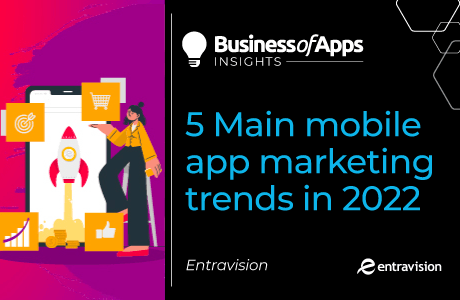If you want to improve your mobile marketing strategy, mobile attribution is a topic you shouldn’t overlook.
As a business owner, you know that growing your app or service can be difficult. There are many ways to market your product and many different messaging strategies to choose from. How do you know which one will work best for you?
The answer is to have a consistent strategy of Mobile Marketing Attribution. Attributing sales and conversions to the correct channels is essential for effective mobile marketing.
What is mobile attribution?
Mobile Attribution is a way of determining which marketing channels are driving results. It allows you to track your users’ journey from the very first click to conversion. Based on this data, you can see what messaging and marketing strategies work best and adjust your tactics accordingly. As a result, you can attract more users and grow your business faster.
Benefits of mobile attribution
There are several benefits of implementing a Mobile Marketing Attribution strategy.
- It helps businesses understand the effectiveness of their marketing campaigns. When customers interact with a brand’s app or website, their actions are tracked and recorded. This information is used to identify the marketing channels that generate the most conversions. This provides a more accurate understanding of customer behavior, which businesses can use to optimize their campaigns for better results.
- Conversely, mobile marketing attribution can help identify any underperforming channels so that you can eliminate or improve them.
- Mobile marketing attribution can also improve customer loyalty and engagement. By understanding which messages are most effective at acquiring new users, you can focus on creating more effective customer engagement programs.
- It can help identify fraudulent activity. By pinpointing the sources of fraudulent traffic, you can take steps to prevent it from impacting their bottom line.
How does mobile attribution work?
Mobile Attribution assigns a value to a specific marketing action (such as clicking on an ad, downloading an app, or making a purchase) that resulted in a conversion (i.e., someone who became a customer). It allows you to measure their campaigns’ effectiveness and determine which channels are generating the most conversions.
The different attribution models
Let’s examine the different attribution models’ benefits and drawbacks.
Last click
Last click, or last touch, attribution gives credit to the last touchpoint before the conversion occurred and is therefore easy to understand and implement. It can also help identify which channels are driving the most valuable traffic.
However, last click attribution has some drawbacks. For example, if a customer were initially acquired through an organic search campaign but then converted through a paid search campaign, this model would give all the credit to the paid search campaign.
- It doesn’t necessarily reflect the actual value of each touchpoint in the journey.
- It can lead to sub-optimal decisions if marketers put too much emphasis on driving last-click conversions.
Overall, last click attribution is a valuable tool, but using it with other data points is essential to get a complete picture of the customer journey.
First click
First click, also known as first touch, attribution assigns the credit for a conversion to the first marketing channel used. This first channel could be a paid ad, a social media post, or a website visit. This model is simple to use and can be implemented quickly by businesses.
However, there are also some disadvantages to consider. One common criticism is that it doesn’t account for other touchpoints’ role in the customer’s decision-making process. Additionally, first click attribution can lead to inaccurate channel investment decisions if not used correctly.
Multi-touch attribution (MTA)
By assigning value to all the contact points, MTA provides a complete picture of how users interact with a brand. There are four types of MTA, each with its advantages and disadvantages: Linear, Time-Decay, U-Shaped, and W-Shaped.
Linear attribution
Linear attribution is a way of giving credit to every touchpoint in the customer journey, regardless of its importance. So, if a customer sees an ad, clicks on it, and then makes a purchase, each of those three interactions would get an equal weighting in the attribution model.
Linear attribution shows you the impact of all your content and messaging during the ‘consideration’ phase of the buyer’s journey. This information is valuable if you want to know how your touchpoints work together to influence a decision to buy.
Time-decay
Time-decay attribution assigns increasing value to recent touches and decreasing value to earlier ones. It is characterized by the following:
- It encourages marketers to focus on recent touchpoints, which can be more relevant to customers. This model incentivizes marketers to generate new leads continually.
- It assumes that customers may forget earlier touchpoints over time.
- It assumes that customers typically move through the purchase funnel relatively quickly.
However, there are also some disadvantages to time-decay attribution.
- First, it can lead to short-term thinking and ignores long-term brand building.
- Second, it ignores that customers may research a product or brand over a long period before finally making a purchase.
- Third, it doesn’t account for the fact that some touchpoints (such as word-of-mouth recommendations) may have a longer-lasting impact than others.
- This also fails to give credit to the essential interactions that may have happened early in the customer’s journey.
U-shaped attribution
The U-shaped attribution model is a popular way to attribute credit across the buyer’s journey. This model gives a higher percentage to the first and last touchpoints than those in the middle.
This makes sense because the beginning and end are the most important. But you have to remember that this can mean some touchpoints are ignored. For example, if a customer does a lot of their research online but then buys something in a store, the store may not get any credit.
W-shaped attribution
The W-shaped attribution model acknowledges the importance of the buyer’s journey’s beginning, end, and middle touchpoints. This model makes sure that no one interaction is responsible for the final outcome. This is done by giving equal weight to all touchpoints and recognizes that it takes a variety of interactions to convert a customer.
With this information, you can optimize your marketing campaigns to reach your target audience better and improve your overall conversion rate.
Challenges
Proper mobile attribution is complicated, especially across the entire mobile ecosystem. These are some of its challenges.
Privacy-related
People are often concerned about privacy when it comes to tracking users and their activity. Companies need access to specific data in order to attribute actions to certain channels, but some people feel uncomfortable that companies are tracking their online or mobile behavior. This concern needs to be taken into account when designing an attribution strategy.
This issue will only likely increase with the upcoming rollout of Apple’s AppTrackingTransparency (ATT) framework, which changing how apps can track user activity. Developers need explicit user permission before tracking activity. Some people don’t like this change because it restricts what apps can do. But others think it’s necessary to protect user privacy. Marketers who can adapt to these changes will be well-positioned to continue driving results for their campaigns.
Accuracy issues
There is also the question of how accurate attribution is. Different attribution models can produce different results, so it’s important to determine which one provides the most accurate picture. Attribution models are only as good as the data they are based on; sometimes, the data can be inaccurate or incomplete, leading to incorrect or misleading results.
Scalability
Mobile Marketing Attribution, no doubt about it, is a decision that takes a lot of time and effort. It requires a detailed analysis of user behavior and can be resource-intensive, and not all businesses have the resources to make it work. For some businesses, this can be a difficult task, especially if they are small.
Choice of model
Another challenge is that there is no one-size-fits-all approach to attribution, so businesses must choose an attribution model that fits their specific needs.
Due to the complexity of implementing the other models, the vast majority of advertisers opt for the Last Click Attribution Model.
Conclusion
Despite the many challenges facing Mobile Attribution, it is becoming more and more important in the mobile marketing ecosystem. And with careful planning and execution, you can overcome these challenges and reap the many benefits of mobile attribution. You can select an attribution model that accurately reflects how your business operates and the goals you are trying to achieve.
When done correctly, mobile attribution can help you better understand which campaigns are driving results and convert those insights into better-performing future campaigns.
If you want to ensure maximum ROI, mobile attribution is a critical pillar of your marketing strategy.











